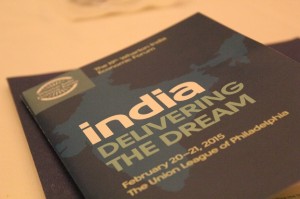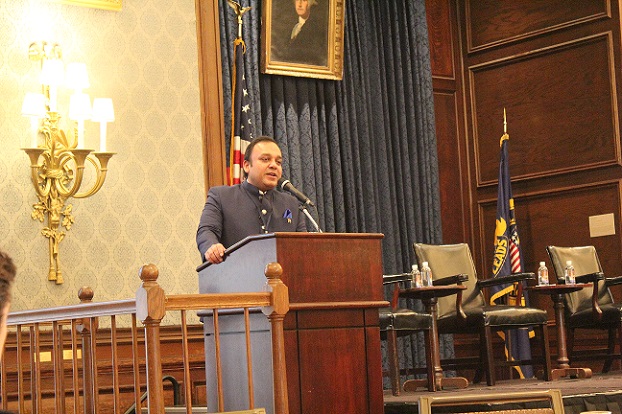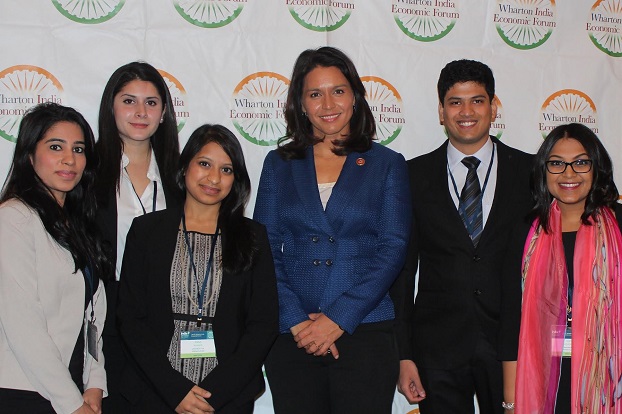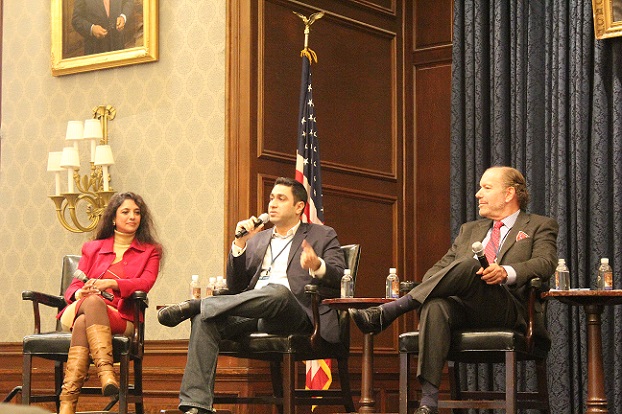
India is currently enjoying a renewed moment in the global spotlight. On his recent state visit to India, President Barack Obama spoke of Prime Minister Modi’s rise from being the son of a chai stall owner to running the country, as a fitting example of the ‘Indian Dream.’ By drawing parallels to the canonical ‘American Dream,’ Obama’s recognition of India’s ability to become a beacon of opportunity was yet another in a series of global nods to the country.
Though the country continues to face major developmental challenges, it seems India is sitting at the edge of immense opportunity. It is perhaps fitting, then, that this year’s Wharton India Economic Forum (WIEF) centered on the theme of ‘India: Delivering The Dream.’
Organized entirely by the MBA students at University of Pennsylvania’s Wharton School of Business, WIEF was hosted at the prestigious Union League of Philadelphia, February 20-21. In its 19th year, WIEF brought together some of India’s brightest and most experienced minds in the fields of business, entrepreneurship, and social innovation in a series of keynote addresses, panel discussions, coffee chats and a startup competition.

In his opening keynote address, Punit Goenka, Managing Director and CEO of Zee Entertainment Enterprises, highlighted the rapid 15% growth of the media and entertainment industries, which is expected to exceed $30 billion by 2020. “Gone are the days when the youth leave India,” he says, citing the growing wealth of opportunities in India that is driving the boom in innovation and entrepreneurship.
Goenka highlighted the need for entrepreneurs to understand the cultural and technological realities of India first in order to succeed at providing solutions. “India is still largely a single TV per household country,” he adds, “but there’s also a rapid growth in Internet usage, with over one third of the population with mobiles.” This presents unique challenges, Goenka explained, in what kind of content to deliver and the best way for delivering it given the cultural and infrastructural boundaries.
Speaking further on the potential for US-India collaboration, Congresswoman Tulsi Gabbard, US Representative for Hawaii, discussed in detail the various ways to move forward. “A true US-India partnership has to happen at every level, including corporate, nonprofit, small business and so on,” Gabbard says, adding that “the US conducts more military to military exercises with India than any other country.”
As a member of the Congressional Caucus on Indian Americans, Gabbard spoke of the proposed sister-state partnership between Hawaii and Goa, as well as avenues for great film production collaborations between the two countries. “We have an opportunity for both our countries to lead in the spirit of aloha,” Gabbard adds, appealing to the Hawaiian word for peace and compassion.

The panel discussions at WIEF centered on the topics of investing in India, understanding the Indian consumer, entrepreneurship, and exploring what the Indian dream can realistically mean. Panelists, representing a variety of businesses ranging from investment funds, tech startups to marketing companies, debated on the ever-changing dynamics of the Indian business landscape and what it says about the dauntingly large demographic of the nation.
Alongside optimism, there was also a clear awareness of the challenges the business community continues to face. With changing regulations and most importantly, a lack of sufficient infrastructure in place, speakers commented on inevitably having to wait for the government to catch up to the needs of the business community or find alternative ways to grow.
Follow next practices, not just best practices – Hital Meswani, ED of Reliance Industries @Wharton #wief15
— Pulkit D (@PulkitDatta) February 21, 2015
Hital Meswani, Executive Director of Reliance Industries, gave the example of the Jamnagar Refinery in Gujarat, the world’s largest oil refinery and the feather in Reliance’s cap. “We had to create our own infrastructure when it didn’t exist,” Meswani explains, describing the roads, railway tracks, shipping port, telecommunications networks and residential facilities his company had to build just to accommodate the scale of the refinery. They had to build a mini-city from scratch to realize their grander vision.
Others spoke about using entrepreneurship to fill in the gaps in services where the government lags behind, including using mobile technology to provide healthcare access to remote villages, or new ways of providing access to education.

To accomplish this, the way brands communicate with their consumers must also change radically. “Brands will collaborate with consumers and with media to become publishers themselves,” explains Charulata Ravi Kumar, CEO of brand marketing firm Razorfish India. She adds that brands will be doing more contextual marketing, where “it’s not talking about the brand themselves but talking about their relevance and super usefulness to the consumer’s life.”
Ultimately, the consensus on the most potent ingredient in realizing the Indian dream was articulated by Arihant Patni, Managing Director, Patni Financial Advisors. “It’s our kids, those who are coming out of college,” he says. “I listen to hundreds of business plans every month. Some of them are good, some of them aren’t, but just the sheer will to create good sustainable companies, even if a fraction of it happens, we’ll still be putting ourselves up there on the map.”
President Obama’s invocation of the ‘Indian dream’ earlier this year may have been a combination of goodwill and political maneuvering to align closer with India. However, the robustness with which the theme was discussed and explored at WIEF, by its array of speakers, signals the genuine belief in what this dream could mean. If the sense of optimism at this year’s WIEF were anything to go by, it would seem that the ‘Indian Dream’ is becoming more than just a headline-grabbing label.
* * *
Pulkit Datta is a writer and filmmaker based in New York City. He has written extensively on cinema and culture, and also independently writes and produces feature films, documentaries and shorts. Follow him on Twitter @PulkitDatta.












